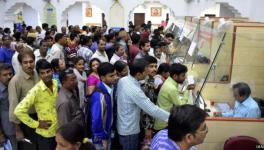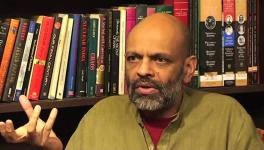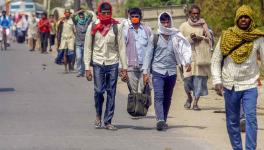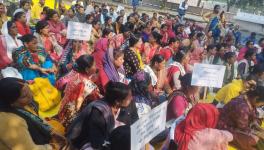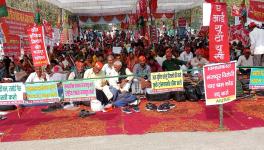The Real World of India’s Corporate Hospitals

I’ve been upset ever since I saw a video which speaks of a patient held captive at a well-known NCR (National Capital Region) hospital. His mother, who has recorded the video, says she was asked repeatedly to pay more money than previously agreed upon for a blood transfusion. As the haggling goes on, the filthy lucre demanded shrinks, but the patient is forced to remain hospitalised for two days instead of a few hours. And he has to be left alone, due to Covid-19. He would not be released, it seemed, until the mother finally threatened to call the police. All this unfolded after the blood transfusion—spread across two days—was long over. The hospital concerned, however, has termed the allegations as “baseless”, saying that the woman had not disclosed “full information.”
I am no doctor or epidemiologist, nor pretend to be one. I have an interest in health issues, and am in love with books on healthcare by doctors or other writers. By early March, when the novel coronavirus had started laying waste to Europe, especially Italy and Spain, and as snippets of its spread snuck out of China, even an ignoramus like me needed no crystal ball to anticipate that India too will be ravaged soon—but all those days we were busy with other important activities: welcoming Trump, and the Delhi riots!
By mid-March, it had alighted on us. But the official lockdown was clamped only on March 24, like most things done in a blaze of suddenness and alarm, for 21 days—we had three days more than the battle of Mahabharata to beat back the virus. The pious aperitif of tali-bajao, thali-pito, 9-baje 9-minute diya-jalao was served, granting righteous time to change the government in Madhya Pradesh. Mid-course we witnessed flower-showering from Indian Air Force planes and choppers. Amen!
The initial slow burn of COVID thus passed, and then it picked up steam; the real thing followed. The lockdown, barely leveraged to prepare the likely hotspots for the pandemic, merely saw daily incantations of non sequiturs, monotonously spewed by a mid-level bureaucrat and offered to select press personnel, commandeered to not ask pesky questions.
There were no plans or allusions to migrants, who had by then started trudging home, from where they were hundreds and thousands kilometres adrift.
The lockdown, in the meantime, got extended—once, twice, thrice—as life versus livelihood wrestled for hegemony. Many chief ministers chalked out their own paths, quite rightly so; and every new extension or easing lockdowns forced the Prime Minister to provide a veneer of consultation. Nothing was starker than these marathon consultations, longer—much longer—than the time provided to clamp the lockdown.
Testing, tracing, isolating and treating never reached a pitch of any consequence, barring a few states whose chief ministers took the lead. Mumbai, with its skewed demographic clusters and searing economic iniquity, was a veritable sitting duck and true to form, proved this is so. As expected, Dharavi lit the fire—and it roiled. Maharashtra, with its limited public hospitals, is barely equipped to deal with this carnage.
The Centre was aloof, smug.
Private hospitals, for all their entrepreneurs’ protestations of national service on primetime TV debates, artfully ensured that their entities stayed away, refusing to treat COVID-19 patients. One medical entrepreneur said that three private hospitals (Medanta, Fortis and Artemis) have repurposed a separate 150-bed COVID-only facility in Gurgaon, away from their main ones. As though COVID patients were “untouchables”, warranting invocation of a purity-pollution paradigm.
The irony of COVID-19 kicks in here. Brought into the country by the privileged denizens or their cohorts, it is the innocent poor and voiceless marginalised who are dying of it today. The testing approved by a conglomerate of privileged-plus souls with unmistakable conflicts of interest plumped, under Indian Council of Medcial Research or ICMR’s imprimatur, for each kit to cost Rs. 4,500. Bangladesh designed a test kit at US$3, but in India the Rs.4,500 price tag stayed its golden course. Plutocracy has its day again!
Soon enough, the NCR caught on the flaming contagion. Although we had the New York example in full glare, we learnt little—neither the speed of the spread nor its management. While New York’s autonomous private hospitals, functioning under capitalist mode, were commandeered to join wholesale the tending of patients alongside the state/federal facilities, India did nothing of the kind. Plutocracy held firm, robustly hegemonised and blessed from the top. When private hospitals were finally roped in, despite swelling public disapproval of their rates, patients were tossed about.
What is germane is that treating COVID-19 patients isn’t a “profitable” business, especially under the pigeon-eyed public gaze in times of social media. Hardscrabble work is the government’s remit, not theirs, because it upsets the business applecart. So, nationalise your losses, privatise your profits!
Against this backdrop, I remember again the case of the mother who lashes out in the video at a private hospital where her son went for a blood transfusion. Not only is COVID treatment a costly module, it has also cast a long shadow across the fence, concurrently wreaking havoc on non-COVID treatment costs. Hospitals have suffered immensely in terms of patient footfall in the past few months, and this is likely to stay so in the foreseeable future, till the time a vaccine is found. All businesses have taken a hit. Every business is scrambling to make up for the lost months and the lukewarm days ahead.
But COVID-19 aside, what we have is an insidiously-flawed model for a noble profession like medicine. Our national healthcare model has done nothing of note on infectious diseases and epidemiology. With its low healthcare budget (as a share of gross domestic product or GDP) and poor public primary and secondary healthcare system, the nation has handed over healthcare on a platter to the market. Let me mirror my personal experiences to express my anguish for the mother in the video.
As a patient with a rare tumour, I was closely monitored by my gastroenterologist after two back-to-back surgeries. I kept bleeding. It was microscopic and a colonoscopy was not able to detect the bleed. I underwent a capsule endoscopy, a new technique then, to image the tucked-in world of my small intestine. It was a day-care procedure. It was over by early evening.
When I was preparing for discharge, as advised by my gastroenterologist, and sought my bill, a young floor coordinator materialised to tell me I cannot be discharged that evening. I gawked incredulously. “But, why not?” He replied, “We don’t discharge patients after 4p.m.” I said to him: “But my tests are over and I’ve nothing else to do!”
“Our company rule says that no patient can be discharged at this time of the day. You can be discharged only tomorrow morning.”
My doctor was as distraught as I. It was the management’s call!
A few months later, I had another encounter. I needed a Gallium-68 DOTANOC scan before another surgery. My first scan was done four years ago at the PET-CT department of AIIMS, New Delhi. (The scan wasn’t available in other places.) Subsequent scans were done at a private hospital in Bengaluru. They had gone without hiccup.
After the scan got over, I requested the nurse if I could speak with the doctor and get a preliminary diagnosis before the final results a day later. She said, “No doctors around. The technician did it.” After a long wait, when I finally spoke with the nuclear medicine specialist, I asked, “How’s it that no doctor was around when my scan was done?”
Pat came his reply: “I can’t be present at all the 60-70 scans done every day. You can take your money back!” The next morning I saw a half-page advertisement on the front page of a national daily in which the hospital was enticing cancer patients to itself.
This is the real world of India’s corporate hospital. Doubtless there are exceptions.
I chivvied many doctor friends with the woman’s video. One of them, whom I respect for his professional competence and ethical standards, (he spent his working life in AIIMS and on retirement in two large private hospitals), offered this realistic take: “No one in administration and marketing or billing did go outside of our advice for treatment, procedure, tests, financial cost estimate/charges etc. Our team often reduced or waived charges regularly, without any pressure. Senior doctors could form their own practice patterns, whereas many juniors and patients in need of minor attention, like blood transfusion etc, could be vulnerable to inflated charges. Even for a small biopsy or endoscopy, our team always decided in advance so that patient and their family did not feel distressed or cheated. In short, finance cannot be beyond the purview of the doctor and his/her team.”
Based on my varied experiences, I would say doctors in corporate hospitals, though mostly good and humane, are helpless—hamstrung by targets set by management. Many have shared their acute torment with me, some saying, “These MBA types have no idea of healthcare; they think it’s like any other business. Targets and profits are all!”
So then, as COVID-19 consumes human lives, how will the poor and marginalised be tended to? It is a duel between Mammon and Survival. I guess, given our reigning plutocracy, Mammon shall win, and the voiceless poor shall pass away without a dirge.
I did not intend to paint this picture of unrelieved pessimism. But that’s the naked truth. I’m incensed. I couldn’t not be! Few others are, too. But as the death toll swells, more shall be in days ahead. Human lives, especially of the poor, devalued in normal times, will vanish into nothingness—a mere number!
I fervently hope my prognosis doesn’t come true.
Hospital management, heal thyself!
The author is a former civil servant. The views are personal.
Get the latest reports & analysis with people's perspective on Protests, movements & deep analytical videos, discussions of the current affairs in your Telegram app. Subscribe to NewsClick's Telegram channel & get Real-Time updates on stories, as they get published on our website.












